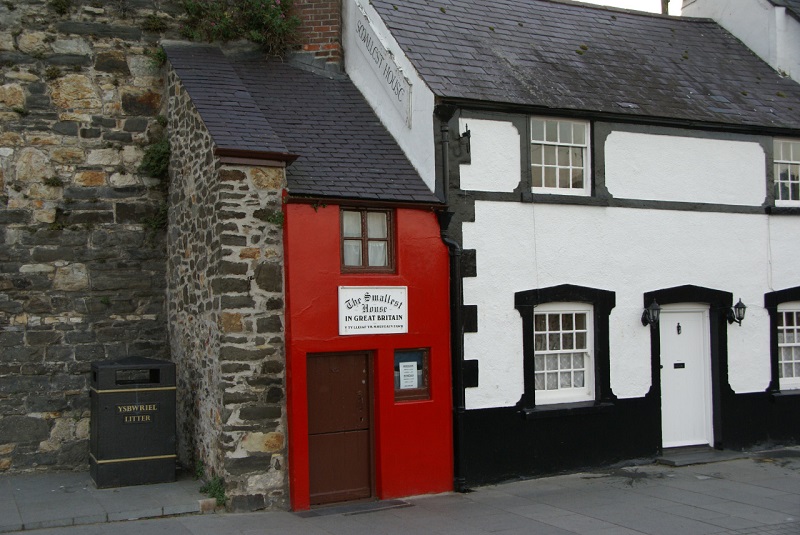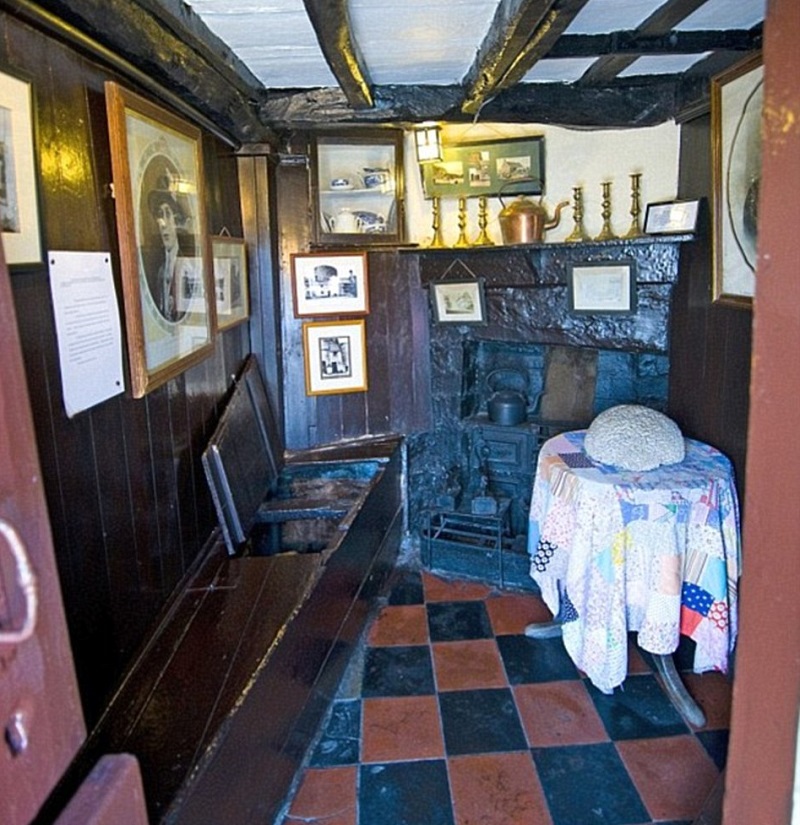Smallest house in Britain
The Smallest House in Britain, also known as Quay House, is a residential building in Conwy Quay, North Wales. With a red-painted façade, the house measures 3.05 m (10 ft) high and 1.8 m (5.9 ft) wide. It has been officially recognised as the smallest house in the UK by the Guinness Book of Records.
Located near the walls of Conwy Castle, the house includes a ground floor living area with space for coal and an open fire, as well as a water tap behind the stairs; and a first-floor bedroom with a small storage niche.
During medieval times, it was common practice for houses to be constructed in rows against the town walls. Typically, rows were built from both ends of the street towards each other, and so there was often a remaining gap that was used to build a much smaller house at minimum cost.
Despite its cramped size, the house was inhabited from the 16th century until 1900, when the last occupant – an ironically tall fisherman – moved out. The council had declared the house unfit for human habitation, along with several equally small neighbouring houses. Although the other properties were demolished, local people campaigned and raised enough money to convert the remaining house into the tourist attraction it remains today.
[edit] Related articles on Designing Buildings Wiki
Featured articles and news
RTPI leader to become new CIOB Chief Executive Officer
Dr Victoria Hills MRTPI, FICE to take over after Caroline Gumble’s departure.
Social and affordable housing, a long term plan for delivery
The “Delivering a Decade of Renewal for Social and Affordable Housing” strategy sets out future path.
A change to adoptive architecture
Effects of global weather warming on architectural detailing, material choice and human interaction.
The proposed publicly owned and backed subsidiary of Homes England, to facilitate new homes.
How big is the problem and what can we do to mitigate the effects?
Overheating guidance and tools for building designers
A number of cool guides to help with the heat.
The UK's Modern Industrial Strategy: A 10 year plan
Previous consultation criticism, current key elements and general support with some persisting reservations.
Building Safety Regulator reforms
New roles, new staff and a new fast track service pave the way for a single construction regulator.
Architectural Technologist CPDs and Communications
CIAT CPD… and how you can do it!
Cooling centres and cool spaces
Managing extreme heat in cities by directing the public to places for heat stress relief and water sources.
Winter gardens: A brief history and warm variations
Extending the season with glass in different forms and terms.
Restoring Great Yarmouth's Winter Gardens
Transforming one of the least sustainable constructions imaginable.
Construction Skills Mission Board launch sector drive
Newly formed government and industry collaboration set strategy for recruiting an additional 100,000 construction workers a year.
New Architects Code comes into effect in September 2025
ARB Architects Code of Conduct and Practice available with ongoing consultation regarding guidance.
Welsh Skills Body (Medr) launches ambitious plan
The new skills body brings together funding and regulation of tertiary education and research for the devolved nation.
Paul Gandy FCIOB announced as next CIOB President
Former Tilbury Douglas CEO takes helm.
UK Infrastructure: A 10 Year Strategy. In brief with reactions
With the National Infrastructure and Service Transformation Authority (NISTA).
























